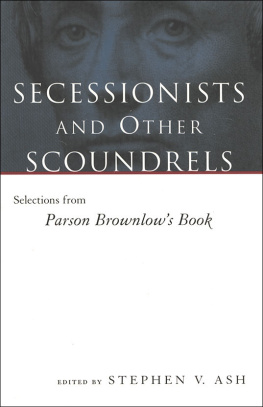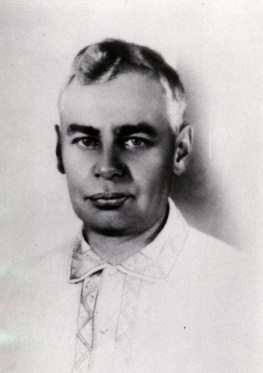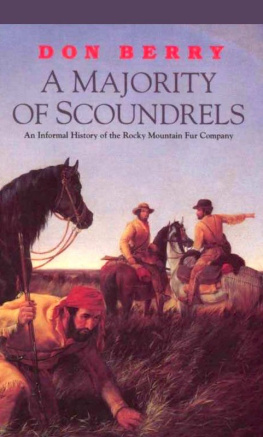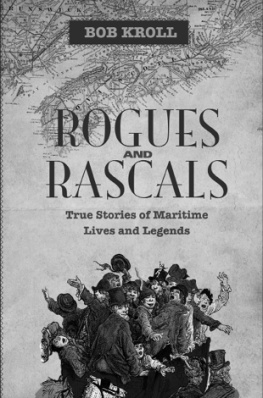Steven L. Piott - Audacious Scoundrels
Here you can read online Steven L. Piott - Audacious Scoundrels full text of the book (entire story) in english for free. Download pdf and epub, get meaning, cover and reviews about this ebook. year: 2020, publisher: TwoDot, genre: Science. Description of the work, (preface) as well as reviews are available. Best literature library LitArk.com created for fans of good reading and offers a wide selection of genres:
Romance novel
Science fiction
Adventure
Detective
Science
History
Home and family
Prose
Art
Politics
Computer
Non-fiction
Religion
Business
Children
Humor
Choose a favorite category and find really read worthwhile books. Enjoy immersion in the world of imagination, feel the emotions of the characters or learn something new for yourself, make an fascinating discovery.

- Book:Audacious Scoundrels
- Author:
- Publisher:TwoDot
- Genre:
- Year:2020
- Rating:4 / 5
- Favourites:Add to favourites
- Your mark:
- 80
- 1
- 2
- 3
- 4
- 5
Audacious Scoundrels: summary, description and annotation
We offer to read an annotation, description, summary or preface (depends on what the author of the book "Audacious Scoundrels" wrote himself). If you haven't found the necessary information about the book — write in the comments, we will try to find it.
Audacious Scoundrels — read online for free the complete book (whole text) full work
Below is the text of the book, divided by pages. System saving the place of the last page read, allows you to conveniently read the book "Audacious Scoundrels" online for free, without having to search again every time where you left off. Put a bookmark, and you can go to the page where you finished reading at any time.
Font size:
Interval:
Bookmark:
WHEN NEWS BROKE THAT GOLD HAD BEEN DISCOVERED IN CANADA close to the Alaska border in 1897, it set off a stampede to the Klondike. The richness of that strike also encouraged gold digging in parts of Alaska, including the Seward Peninsula on the barren, rock-girded western coast of Alaska only fifty miles across the Bering Strait from Siberia. In that remote location, accessible by boat only part of the year (June to October), a group of eight prospectors discovered gold in March 1898 along Melsing and Ophir Creeks, both tributaries of the Niukluk River. Staking their claims, they worked at placer mining, a process by which dirt is washed away from surface gravel to reveal valuable gold particles. Others, primarily whalers who deserted ship and a number of Laplanders who had been imported as deer herders, soon flocked to this spot near what became known as Council City. By the summer of 1898 there were roughly several hundred men in the district. It was at Council City that three individualsminer John Brynteson, tailor Erick O. Lindblom, and reindeer herder Jafet Lindeberghappened by chance to meet and agreed to enter into a prospecting partnership.
John Brynteson was a native of Artemark, Sweden, a historic mining district. Coming to the United States at age 16, he journeyed to the upper peninsula of Michigan where he worked in copper and iron mines. He became naturalized as an American citizen in 1896 and two years later ventured to Alaska. It was there that he heard a rumor of a gold discovery on the Sinuk River by a government reindeer herder. Intrigued by the report, Brynteson, along with three others, headed north in a small boat in July 1898. Becoming stormbound near the present site of Nome, they decided to prospect the Snake River area and, in late July, unearthed trace amounts of gold. But most of the party considered the find to be insufficiently encouraging and decided to continue on to their original destination on the Sinuk. When nothing was found there, they returned to Golovnin Bay. Brynteson, however, believed that the gold particles found along the Snake River warranted a second look and, in mid-September, decided to return to the same area with two new partnersErik Lindblom and Jafet Lindeberg.
Erik Lindblom was a native of Dalarne, Sweden. The son of a Stockholm schoolteacher, Lindblom learned the tailoring trade. After saving enough money, he journeyed to California, settled in the San FranciscoOakland area, and became a naturalized citizen in 1894. Although he had been working as a tailor, in the spring of 1897 Lindblom decided to ship north to Alaska as a sailor. One story has it that while drunk in San Francisco, he had actually been shanghaied and transported north as an impressed deckhand. Either way, he jumped ship at Port Clarence and made his way down the coast to Golovnin Bay, then up the Fish and Niukluk Rivers to Council City where he eventually met up with Brynteson and Lindeberg.
Jafet Lindeberg was a native of Baddeven, Norway. His family had a background in reindeer herding and his uncle worked as a copper miner. Lindeberg was educated in English, French, German, and Russian as well as his native language. In January 1898, he signed a contract with Dr. Sheldon Jackson, superintendent of the US governments reindeer enterprise in Alaska, who was on a recruiting mission to Norway in search of reindeer herders. Jackson initially intended to send Lindeberg to Plover Bay in eastern Siberia to trade for more reindeer. However, when Lindeberg arrived at St. Michael, a central trading post on Norton Sound, he learned that hostile natives had disrupted the Siberian trading operation. Now left without a suitable position, Dr. Jackson gave him permission to leave government employment. Convinced that prospecting for gold promised greater rewards than reindeer herding, Lindeberg set out for the diggings in the Council City area. It was there that he met his future mining partners. Not then a citizen of the United States, Lindeberg had declared his intention to become a citizen before the US commissioner at St. Michael.
The three men prospected for a time in the Council City district, but, as the area was overrun with stampeders and already completely staked out, concluded that they needed to broaden the range of their search if they hoped to find richer diggings. Returning to Golovnin Bay, they acquired a large, flat-bottomed boat and an outfit of provisions and, on September 11, 1898, started up the coast. Stopping at various rivers to prospect along the way, they found traces of gold but not in paying amounts. They finally found an encouraging sign of gold at the mouth of the Snake River. Establishing a camp, they proceeded to prospect along a tributary of that river that later became known as Anvil Creek (named after an anvil-shaped rock that stood at the summit of a nearby mountain). It was there, on September 22, that these three inexperienced prospectors made their famous discovery. They staked out a placer mining claim of about twenty acres and designated their find as Discovery Claim, a collective holding that would later be incorporated as the Pioneer Mining Company. Each of the three lucky Swedes, as they would soon erroneously be known, also staked out a separate claim in his own name on the creek (which was allowed by law) and, following local custom, marked the boundaries with stakes and stone monuments. After locating on Anvil Creek, they proceeded to stake additional claims on Snow Gulch, Dry Creek, and Rock Creek. After panning for several days, they managed to glean a quantity of gold dust valued at about $50. With the evidence of their discovery concealed in a shotgun shell, they returned to Golovnin Bay. They kept news of the find to themselves, but understanding that they would need to organize a mining district, it became necessary to let others in on their secret. Using some discretion, they selected Dr. Albert N. Kittilsen, a physician, G. W. Gabe Price, an experienced miner from California, P. H. Anderson, a Swedish missionary, and Johan S. Tornanses, a Lapp reindeer herder, to join their venture.
After chartering a small schooner and purchasing as many supplies as they could take with them, the party returned to Anvil Creek in mid-October. Upon their arrival, the group held a miners meeting and organized the Cape Nome Mining District. They also re-staked the original

In placer mining, sand and gravel are placed in a trough where rapidly moving water washes away lighter material allowing gold of a higher density to sink to the bottom. The operation shown here was typical at Nome.
COURTESY OF THE LIBRARY OF CONGRESS, PRINTS & PHOTOGRAPHS DIVISION
ground as required by law, marked additional claims, drew up a set of rules to govern the new district, and elected Dr. Kittilsen as the first recorder. Kittilsen, who had been educated at the University of Wisconsin and the Rush Medical College in Chicago, had originally come to Alaska in 1896 after being appointed by the US government as physician for the Lapp reindeer herders stationed at Port Clarence. Although ice was forming in the streams and the ground was beginning to freeze, they were able to construct a crude rocker from materials they brought with them and collect gold dust valued at roughly $1,800. Elated with their early success and the bright prospects that lay ahead, the party returned overland to Golovnin Bay for winter quarters. At that point, the mining claims that had been previously located were officially recorded and filed. The group then began making preparations for next seasons operations, which meant ordering and transporting supplies from St. Michael. Although the Seward Peninsula was practically cut off from communication with the outside world (the closest post office was at St. Michael one hundred miles away) rumors of the strike gradually reached other parts of Alaska and prospectors from Dawson, Eagle, Circle, Forty Mile, and Rampart began to travel down the Yukon that winter with dog teams to the Nome area. By the time of the spring thaw, Anvil City had a population of several hundred hopefuls living in rough cabins and tents scattered along the beachfront. The wild stampede to the treeless tundra of the Seward Peninsula was poised to begin.
Font size:
Interval:
Bookmark:
Similar books «Audacious Scoundrels»
Look at similar books to Audacious Scoundrels. We have selected literature similar in name and meaning in the hope of providing readers with more options to find new, interesting, not yet read works.
Discussion, reviews of the book Audacious Scoundrels and just readers' own opinions. Leave your comments, write what you think about the work, its meaning or the main characters. Specify what exactly you liked and what you didn't like, and why you think so.








